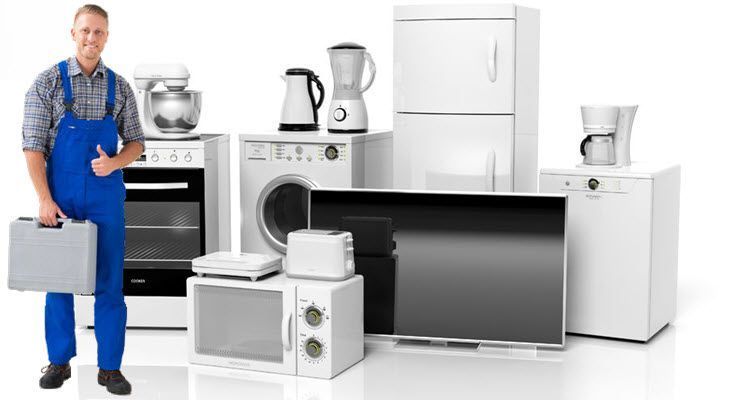Troubleshooting Made Easy: Washer Repair Solutions for Busy Americans
With their ability to handle laundry loads quickly and easily, washers are essential appliances in American homes. On the other hand, problems with these reliable machinery might throw off the daily routine. Having a broken washer may be a big hassle for working Americans, especially if it requires waiting for a repairman or paying for expensive fixes. Thankfully, a little troubleshooting skills can identify and resolve a lot of washer issues. This thorough guide will help you maintain a smooth washing routine by examining typical washer problems and offering simple-to-follow repair methods.
Understanding Your Washer:
It's crucial to comprehend the fundamental parts of your washer before beginning any troubleshooting. Several essential components make up the majority of contemporary washers:
- Control Panel: You may choose temperature settings, wash cycles, and other features with this interface.
- Top-loading washers use agitators, sometimes known as impellers, to move clothing around and clean them. The same outcome is usually obtained by front-loading washers using an impeller or tumbling movement.
- Drum: The inside washing machine tub that is filled with laundry. It rotates to agitate and rinse the fabric while it is in the wash cycle.
- Pump: This part of the washer is in charge of emptying the water at the conclusion of each cycle.
- Wastewater from the washer is sent to the utility sink or drain by the drain hose.
- Water Inlet Valve: Manages the washer's water flow while the fill cycle is running.
Typical Issue
With our foundational knowledge of washer operation now established, let's look at some typical issues and their fixes:
- Washer Won't Start:
- Verify the power source to make sure the washer is powered on and plugged in. To rule out electrical problems, try using a different appliance to test the outlet.
- Door or lid switch: Check to see whether the safety switch on your washer is working properly if it is designed to stop it from starting when the door or lid is open. If needed, swap out the switch.
- Problem with the control panel? Reset the washer by disconnecting it and replugging it after a short while. The control panel might need to be changed if it is not responding.
- Washer Doesn't Fill with Water:
- Verify the water supply by turning on all of the washer's faucets and making sure the intake hoses are straight.
- In order to keep water from flowing into the washer, it is important to clean the intake screens. Debris and sediment can block these screens. After removing the hoses, gently brush the screens.
- Replace the water inlet valve: If the valve isn't working properly, it might have to be replaced. To find and replace the intake valve, refer to the handbook that came with your washer.
- Washer Doesn't Drain Properly:
- Make sure the drain pipe is not kinked or obstructed by checking it. Check the hose for blockages and straighten any kinks.
- Clear the coin trap or pump filter: A lot of washers contain a coin trap or pump filter that can accumulate dirt. Find the filter (typically located at the front or bottom of the washer), get any debris out of it, and give it a thorough cleaning.
- Test the pump; if it isn't working or is producing strange noises, it could need to be replaced. To find out how to test and replace the pump in your washer, go to the handbook.
- Washer Shakes or Vibrates Excessively:
- Level check: Adjust the leveling feet located at the machine's base to make sure the washer is level. Make sure it's evenly balanced by using a bubble level.
- Distribute the load: If the clothing isn't spread evenly, the washer may shake while it's spinning. Stop the cycle, reposition the clothing in an even circle around the drum, and start it again.
- Examine shock absorbers: Should your washer be equipped with dampers or shock absorbers to lessen vibration, look for indications of wear or damage. To increase stability while operating, replace any worn-out shock absorbers.
- Washer Leaves Clothes Wet or Soapy:
- Modify your detergent use: Excessive detergent use might make clothing stick to one other or hold too much moisture. For advice on detergent dose based on load size and water hardness, refer to the manufacturer's instructions.
- Clean the dispenser: Over time, residue can clog dispensers for fabric softener and detergent. After removing the dispenser drawer, thoroughly wash it in warm, soapy water.
- Examine any problems with drainage: At the end of the cycle, clothing may remain moist in the washer due to improper draining caused by a blocked drain pump or filter. To fix drainage issues, take the previously mentioned actions.
Mastering Washer Repair
It might be annoying to deal with a broken washer, but many common problems can be fixed without the help of a professional with the appropriate information and technique. You can keep your washing cycle on track and save time, money, and headache by taking the time to learn how your washer works and putting the troubleshooting ideas in this article into practice.
It's always a good idea to refer to your washer's handbook for detailed instructions and safety precautions. With its ability to offer insightful information specific to the make and model of your appliance, you may approach repairs with confidence and accuracy. Don't be afraid to ask for expert assistance if you run into difficult or new issues, particularly if your safety is at risk.
By keeping your washing machine in good working order and repairing it before problems happen, you're investing in the durability and dependability of your laundry machine. To guarantee years of dependable operation from your washer, it is important to do routine maintenance, timely repairs, and be prepared to solve issues as they arise. Thus, the next time your washer malfunctions, don't freak out. Equipped with the skills and information provided in this book, you'll be able to take on the task head-on and maintain a seamless laundry routine for years to come.
You might also like
Educational Center


Book a Service Today
We will get back to you as soon as possible
Please try again later
Quick & Reliable
We are available 24/7
About Us
Authorized Appliance is an appliance repair contractor referral service. We connect you with appliance contractor in your area. All contractors are operated independently of Authorized Appliance. It is the responsibility of each user to verify that the contractor connected with meets all licensing and insurance requirements in that jurisdiction.
All Rights Reserved - Authorized Appliance


